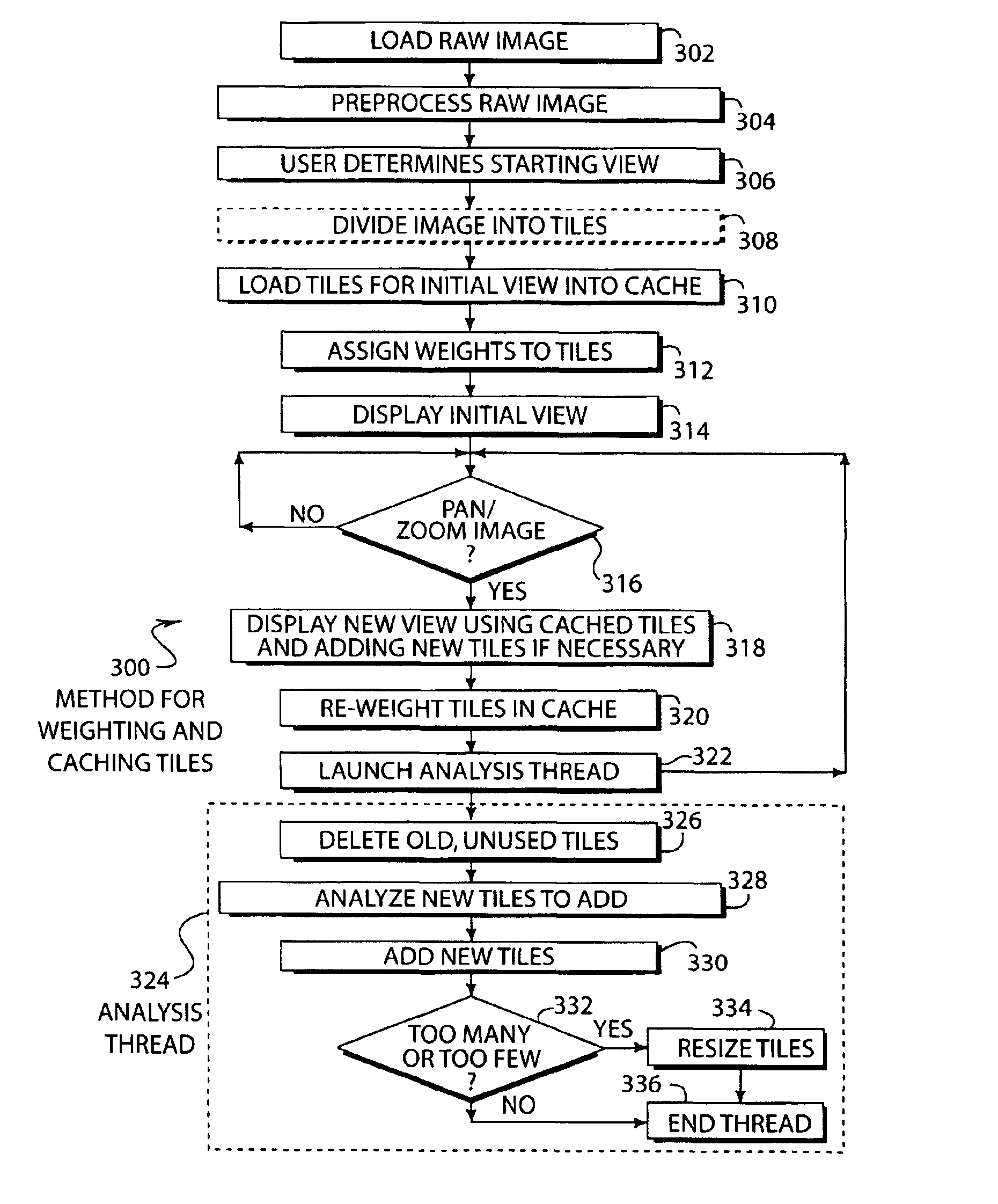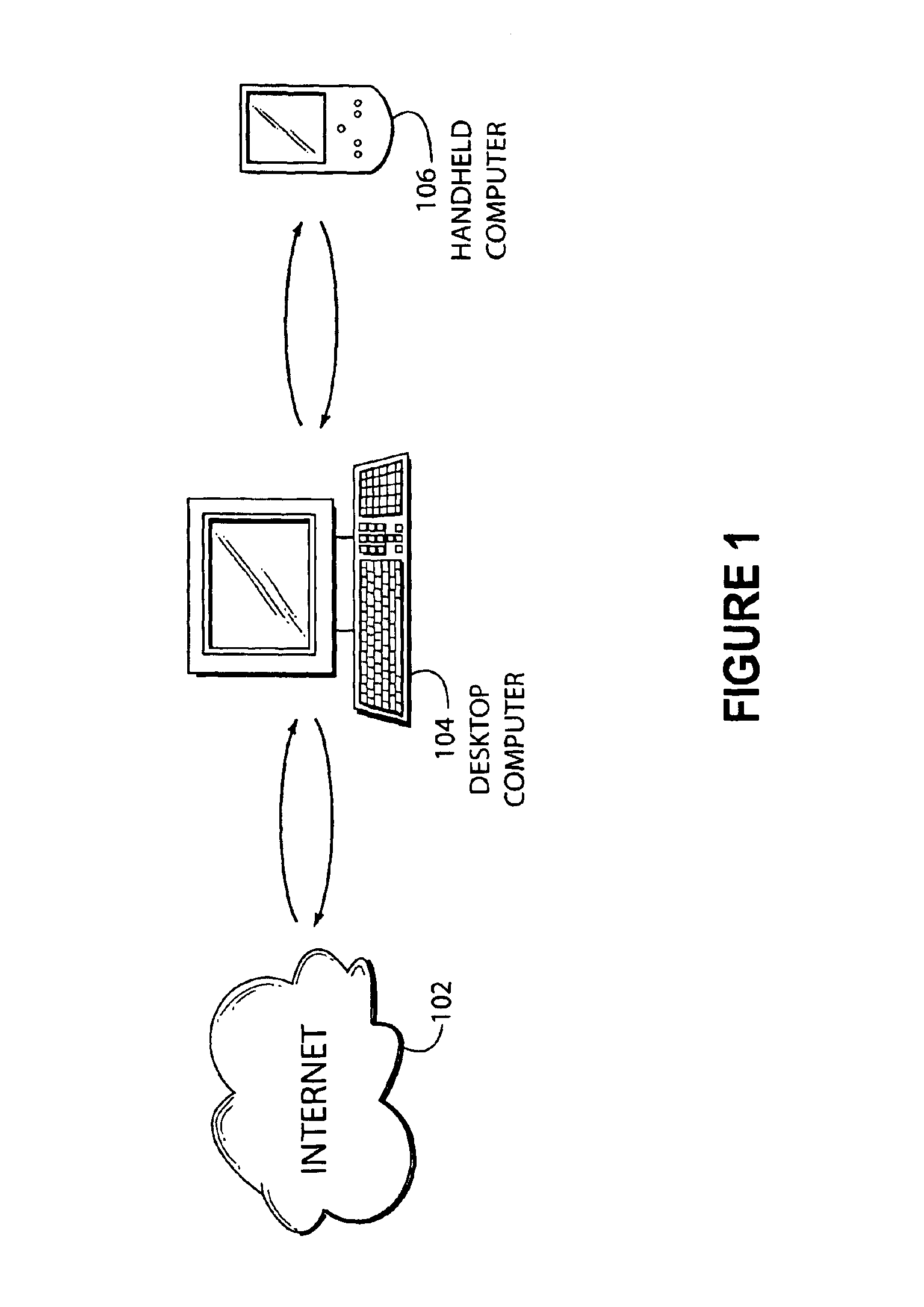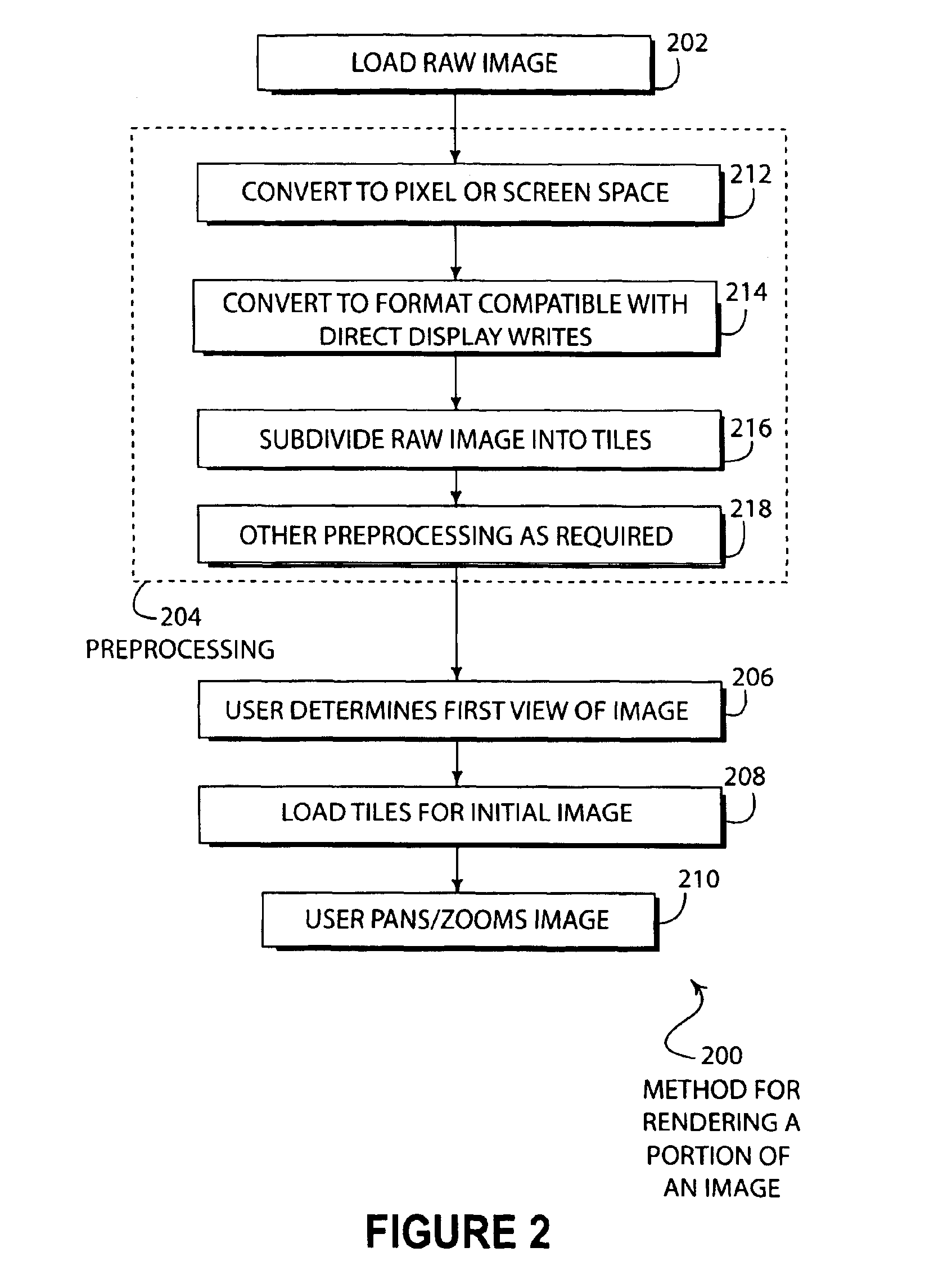System and method for caching and rendering images
a technology of image caching and image processing, applied in static indicating devices, memory adressing/allocation/relocation, instruments, etc., can solve the problems of slow central processing unit, limited memory, slow display of hand held computers,
- Summary
- Abstract
- Description
- Claims
- Application Information
AI Technical Summary
Benefits of technology
Problems solved by technology
Method used
Image
Examples
Embodiment Construction
FIG. 1 illustrates the connection of the Internet 102 with a desktop computer 104 and a hand held computer 106. In one embodiment of the present invention, the desktop computer 104 may receive an image from the Internet 102, preprocess the image, and transfer the image to the hand held computer 106.
The present invention allows large, complex images, such as maps, to be preprocessed and then displayed. The display device may have a slow processor and limited memory that makes displaying and panning and zooming of large databases almost impossible. The present invention allows for the efficient use of memory and relatively slow processing speed on smaller devices to make the image viewing experience of a user similar to a high speed device.
The present invention is directed at the display of large images on computing devices. For example, a map image from a server on the internet 102 may be prepared by a desktop computer 104 and transferred to the hand held computer 106. The hand held ...
PUM
 Login to View More
Login to View More Abstract
Description
Claims
Application Information
 Login to View More
Login to View More - R&D
- Intellectual Property
- Life Sciences
- Materials
- Tech Scout
- Unparalleled Data Quality
- Higher Quality Content
- 60% Fewer Hallucinations
Browse by: Latest US Patents, China's latest patents, Technical Efficacy Thesaurus, Application Domain, Technology Topic, Popular Technical Reports.
© 2025 PatSnap. All rights reserved.Legal|Privacy policy|Modern Slavery Act Transparency Statement|Sitemap|About US| Contact US: help@patsnap.com



